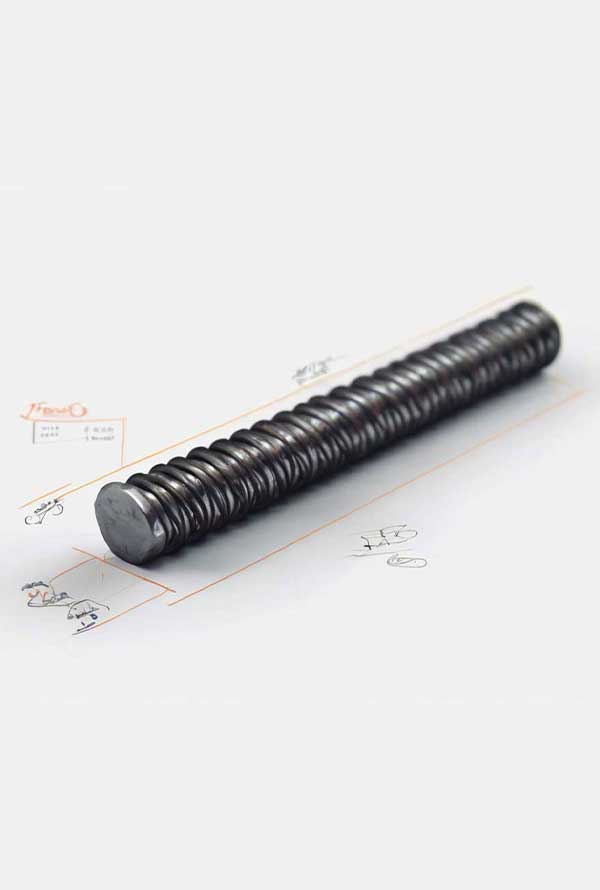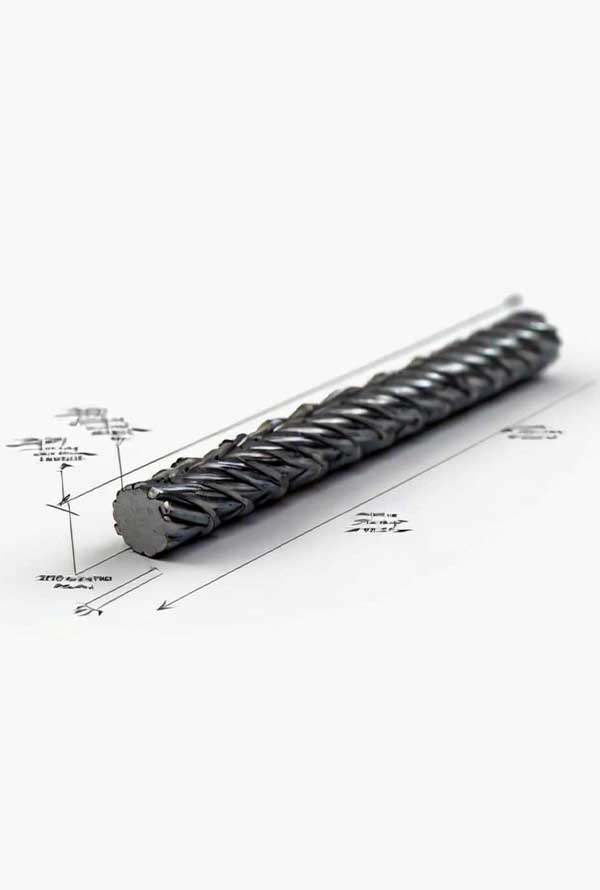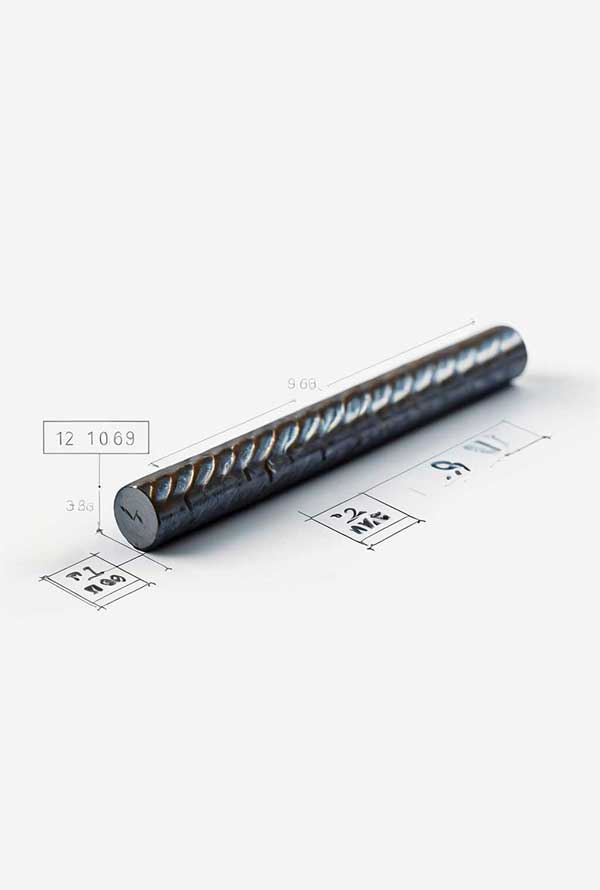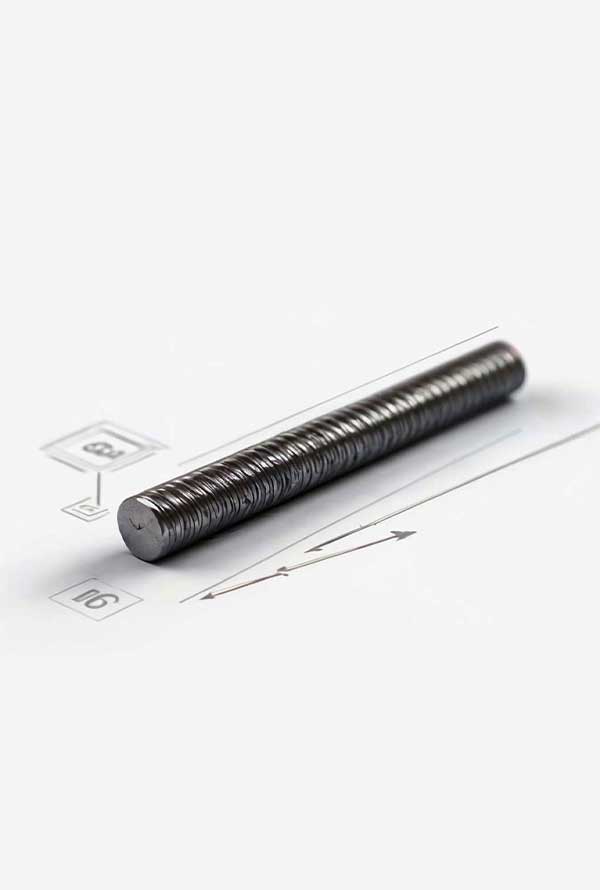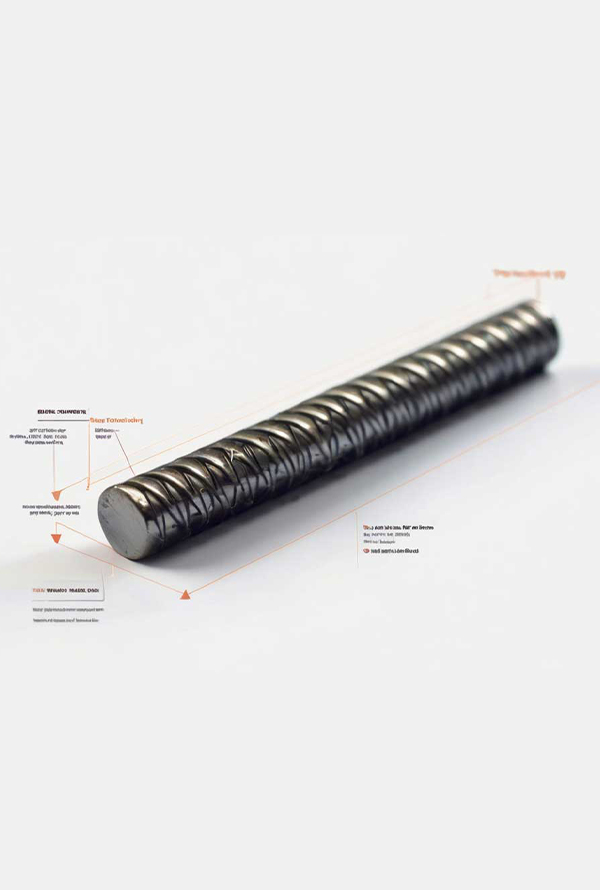Rebar 12 is one of the most widely used steel products in the construction industry, produced by various factories in the country and marketed.
Factors Affecting the Price of Rebar 12
The price of Rebar 12 is influenced by multiple factors. The manufacturer’s brand is one of these factors; each factory sets different prices for its products based on the quality of raw materials, production process, and brand reputation. The grade of the rebar, which reflects its mechanical and chemical properties, is another influential factor, with higher-grade rebars usually being more expensive.
Additionally, the thickness of the rebar also affects its price; as thickness increases, the weight and consequently the price of the rebar also increase. Finally, the weight of the rebar, which depends on its length and diameter, is a determining factor in the final price, as the price of each rebar is calculated by multiplying the price per kilogram by the total weight of the rebar.
Technical Specifications of Rebar 12
Rebar 12 is produced in both plain and ribbed forms. The ribbed type is particularly important in concrete structures due to its increased adhesion with concrete.
General Technical Specifications
- Size: The nominal diameter of Rebar 12 is 12 mm.
- Weight: The approximate weight of a 12-meter rebar ranges from 9 to 12 kilograms. This weight depends on various factors, including the alloy used, production standard, and manufacturing method.
- Ribs: Rebar 12 typically features ribs of 340, enhancing its adhesion to concrete.
- Grade: Rebar 12 is produced in grades A2, A3, and A4, each offering different mechanical properties.
- Production Standard: Rebar size 12 is manufactured in accordance with international standards such as DIN and ISIR.
- Length: Rebar 12 is usually produced in 12-meter lengths.
- Packaging: Each bundle of Rebar 12 contains approximately 180 rebars, with a total weight of about 2 tons.
Mechanical Properties
The yield stress of Rebar 12 depends on its grade. Typically, the yield stress of grade A2 Rebar 12 is about 3000 kg/cm².
Factors Affecting Rebar Properties
Various factors influence the properties of rebars. The type and amount of alloys used in rebar production are significant factors affecting its mechanical properties. Additionally, different production methods, such as hot rolling and cold rolling, impact the internal structure and consequently the properties of the rebar. Furthermore, production standards, which define specific technical specifications for rebar, also influence its properties.
Applications of Size 12 Rebar
Rebar size 12 is used in a wide range of structural applications.
Main Applications
Rebar 12 is utilized in various applications in the construction industry. It is used in the construction of different concrete sections, including rectangular, circular, and square sections. It is also employed to reinforce the bases of beams and concrete columns. In building foundations, size 12 rebar is used to increase the strength and stability of the structure. Additionally, Rebar 12 is used for creating reinforcing meshes in different parts of a structure, such as floors, walls, and ceilings.
Factors Affecting the Price
The price of Rebar 12 is influenced by various factors. Fluctuations in the steel market and raw materials directly affect the price of rebar. Moreover, increased demand for rebar, especially during construction booms, leads to price increases. Additionally, different rebar manufacturers set varying prices for their products.
Concrete Cover for Rebar 12
To protect rebar against corrosion and enhance the durability of the structure, rebars must be adequately covered with concrete. The required concrete cover for size 12 rebar is as follows:
- Side rebars: At least 36 mm
- Internal rebars: At least 30 mm
Reinforcing Meshes
To enhance floor strength, reinforcing meshes with rebars bent at 90 degrees are used. The length of these rebars should be at least 15 times the length of plain rebar and 12 times the length of ribbed rebar. The spacing between rebars in the mesh should not exceed 12 times the rebar diameter.
Comprehensive Buying Guide for Size 12 Rebar
Considering the diverse applications of this product, understanding the essential points when purchasing it can lead to a more accurate and reliable choice.
Methods of Purchasing Rebar 12
Rebar size 12 is typically sold in the iron market through three different methods. In the bar method, each rebar is sold individually with a specific length, usually 12 meters. Another method is bundling, where several rebars are packaged together and sold as a bundle. Lastly, in the weight method, rebars are sold by weight in kilograms.
Important Points When Buying Rebar 12
When purchasing Rebar 12, it is essential to consider several key points. First, ensure the quality of the product and check that the purchased rebar is produced by reputable factories and complies with the necessary standards. Furthermore, depending on the intended application, selecting the appropriate rebar grade, which reflects its mechanical properties, is crucial.
The rebar weight should also conform to the declared standards, and the type and depth of the ribs, which affect its adhesion to concrete, should be taken into account. Additionally, ensure that the length of the purchased rebars matches the project requirements. The price of rebar also varies depending on factors such as market fluctuations, manufacturer brand, and product quality, so comparing different prices before purchasing is recommended.
Finally, requesting quality certificates for the purchased rebars from the seller is an important and necessary step.
Methods of Producing Rebar 12
Below are the main methods for producing this product:
Hot Rolling Method
This method involves heating steel billets in furnaces and passing them through steel rollers to shape them into rebars. This method is widely used and economically efficient, although internal stresses may develop in the final product.
Alloying Method
In this method, adding alloying elements to steel billets improves the mechanical properties of the rebar. Advantages include higher resistance to corrosion and wear and uniform properties across the rebar’s surface and core. However, production costs are higher compared to the hot rolling method.
Thermex Method
In this method, rebars are rapidly cooled after shaping to improve their mechanical properties. Advantages include high strength, good weldability, and reduced internal stresses. However, this method requires specialized equipment and has higher production costs.
Grades and Production Standards
Rebar 12 is produced in various grades, including A2, A3, and A4, each offering different mechanical properties. These rebars are manufactured according to national and international standards and are marked with codes like CT, CU, JT, JU, and SA.
| Production Method | Advantages | Disadvantages | Common Grades | Standard Codes |
|---|---|---|---|---|
| Hot Rolling | Economical, Widely Used | Internal Stresses | A2, A3, A4 | CT, CU, JT, JU, SA |
| Alloying | High Resistance, Uniform Properties | High Cost | A2, A3, A4 | CT, CU, JT, JU, SA |
| Thermex | High Strength, Good Weldability | High Cost | A2, A3, A4 | T |
Weight of Size 12 Rebar and Influencing Factors
The weight of each rebar plays a crucial role in engineering calculations and purchasing decisions.
Standard Weight and Factory Differences
According to the Stahl Standard, the weight of each 12-meter size 12 rebar is 10.656 kilograms. However, the weight of Rebar 12 in different Iranian factories varies between 9 and 11 kilograms. This weight difference can be due to various reasons, including the type of alloy used, the production process, and the internal standards of each factory.
Causes of Weight Differences in Size 12 Rebars
The type and percentage of alloying elements used in rebar production affect its density and, consequently, its weight. Furthermore, differences in production methods, such as hot rolling, cold rolling, and Thermex, can lead to weight differences in rebars. Additionally, each factory may have its specific production standards, impacting the final product’s weight.
Impact of Rebar Weight on Price and Structural Performance
The weight of rebar directly affects both its price and structural performance. Using lighter rebars reduces the overall weight of the structure, thereby decreasing the dead load of the building. This, in turn, reduces the consumption of concrete and steel and ultimately lowers construction costs. On the other hand, the reduced weight of each rebar directly impacts the overall cost and transportation expenses.
Final Note
Given the importance of rebar in concrete structures and fluctuations in the steel market, making the right choice of rebar is crucial. Foolad Sirjan Hadid, offering high-quality products at reasonable prices, is an excellent option for buyers. It is recommended to consult with sales experts before purchasing to make an informed decision.
